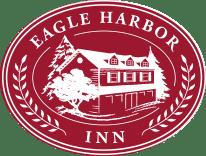Join our efforts. With your help, more of Door County’s wild places will be protected.
Inside: The Nevins family’s legacy of conservation and donation of precious land.


Join our efforts. With your help, more of Door County’s wild places will be protected.
Inside: The Nevins family’s legacy of conservation and donation of precious land.


Enjoy stories of gratitude from members. Join the Land Trust and share your tales from the trails. Send your images and comments to photos@doorcountylandtrust.org.
Our 8-yearold donates some of his own money to the DCLT whenever he can. He was so excited to receive this bag (with the Land Trust logo) and now insists on taking it on all our hikes!

The Grim family on a recent hike. Photo by Amie Michelle Grim
-Amie Michelle GrimWe call these ladies The Fab Four! With their support, the Chambers Island Nature Preserve became a reality. From left are: Suzanne Fletcher, Mary Brevard, Barbara Frank, and Mary Jane Rintelman.

Just a note of thanks. With the trails available because of the land trust, my wife and I discovered a plant we'd never seen before.In the woods above the bluff of the Bay Shore Blufflands preserve, we encountered a number of collections of what we later discovered is a ghost pipe. -Russell Butek

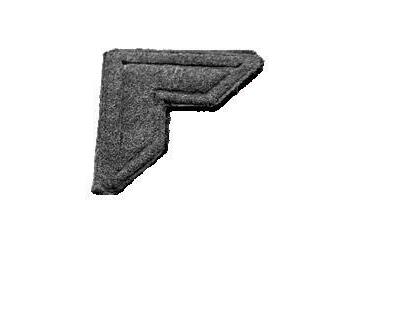
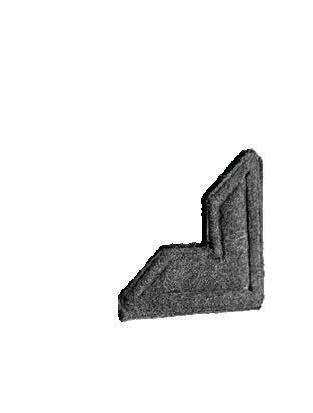

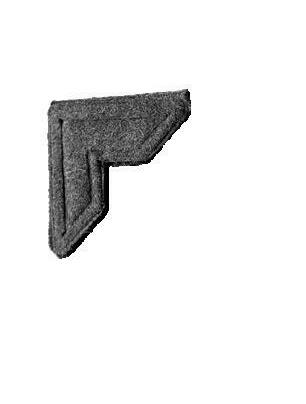


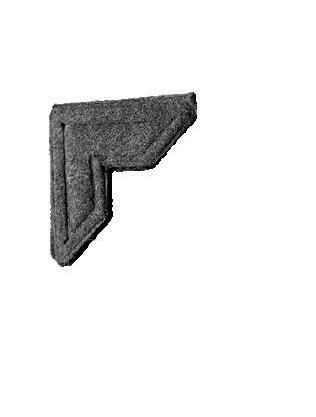

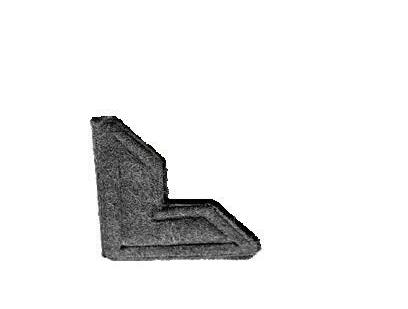
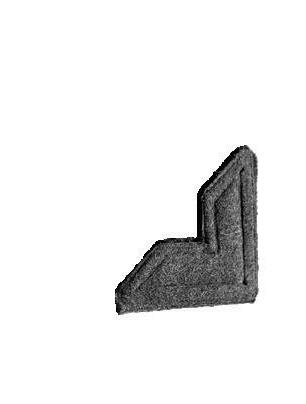
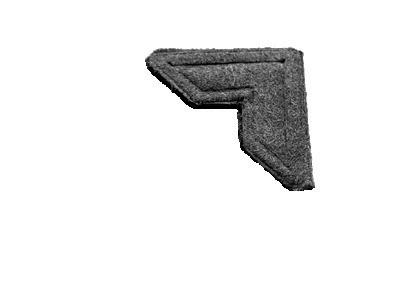




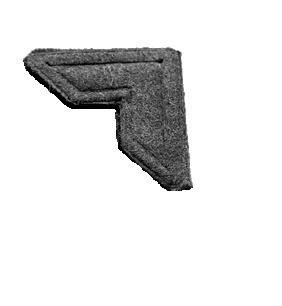
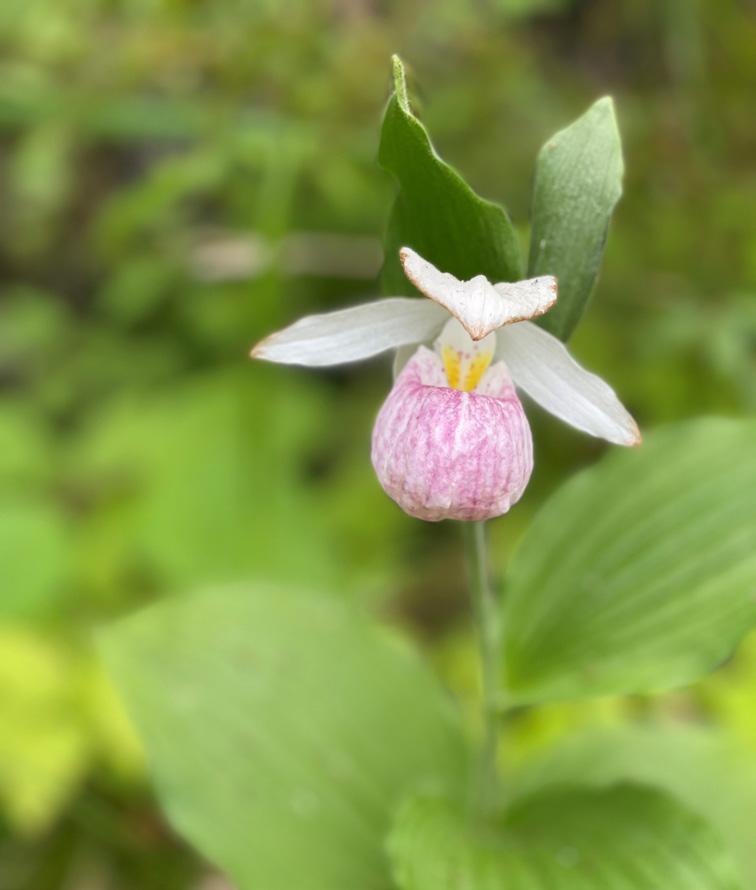
Dad so loved Door county, so protecting its land and water brought him joy through the Land Trust.

Kids learn the right way to put out a fire at the Chambers Island annual meeting.
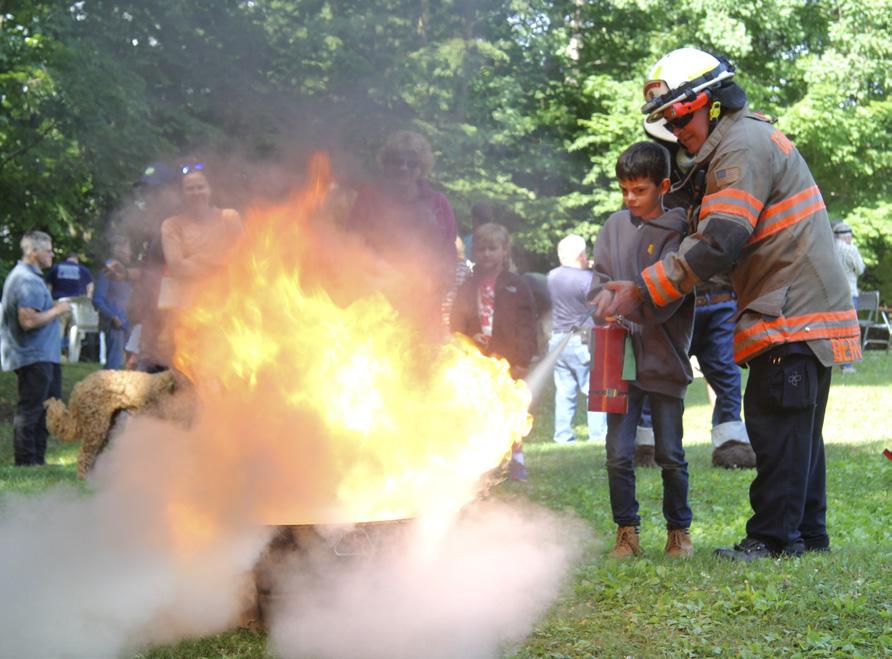
As a new transplant to Door County, I have had the pleasure of exploring and visiting the area over the last month. The staff and board here at the Land Trust have given me an amazing set of tours, hikes, and boat rides to some of the most enchanting places that Door County has to offer. In all of this wonderful exploration it is also evident that the peninsula is being rapidly developed. Forests and shorelines are dangerously compromised through construction projects that fail to follow sustainable practices. The unique and high-quality natural areas that make this place so special—that have taken thousands of years to mature and form a complex thriving habitat—can be eliminated in as little as a day.
I am honored to work with this incredibly skilled team of land conservationists at this crucial moment in time. As you well know, it is more than protecting land. We are stewarding our watersheds, mitigating climate change, harboring threatened species, and preserving this unique and wonderful place now and for generations to come. With your continued support, we will do just that.
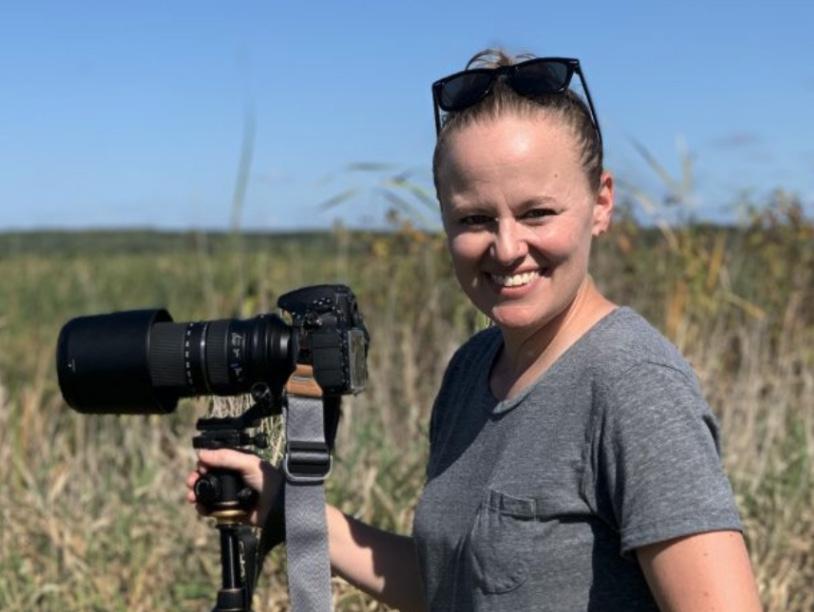
I am grateful to have had the opportunity to meet many of you and look forward to becoming aquainted with more of the people that make Door County so wonderful.
Yours in conservation,
Three Springs Nature Preserve, 10442 Three Springs Road, Sister Bay- The tamaracks and birches provide a range of golden hues that are set off by the deep, cool greens of conifers.
Kangaroo Lake Nature Preserve, 7912 North Maple Road, Baileys Harbor- Enjoy viewing the brilliant red leaves of sugar maples and the yellow/gold display of poplar trees.
Oak Road Nature Preserve, 6391 Oak Road, Egg Harbor- Hardwoods (including tamaracks) and flowers bring texture and bright colors to the landscape.
Bay Shore Blufflands Nature Preserve, 5454 Bay Shore Drive, (County B) & 5519 Reynolds Road, Egg Harbor- Milkweed pods pop with fluffy plumes to carry their seeds. The shimmering leaves of birch and other hardwoods add to the fall spectacle.
Sturgeon Bay Ship Canal Nature Preserve, 5340 Lake Lane & 5200 Lake Lane, Sturgeon Bay- Golden yellow cottonwoods and the flamboyant reds of sugar maples bring dazzling color to a hike that includes a sandy beach and forested areas.

Legacy Nature Preserve at Clay Banks, 1188 South Lake Michigan Drive, Sturgeon Bay- Water views and the steadfast green of cedar trees are complemented with a plethora of fall flowers, including New England asters and goldenrod.
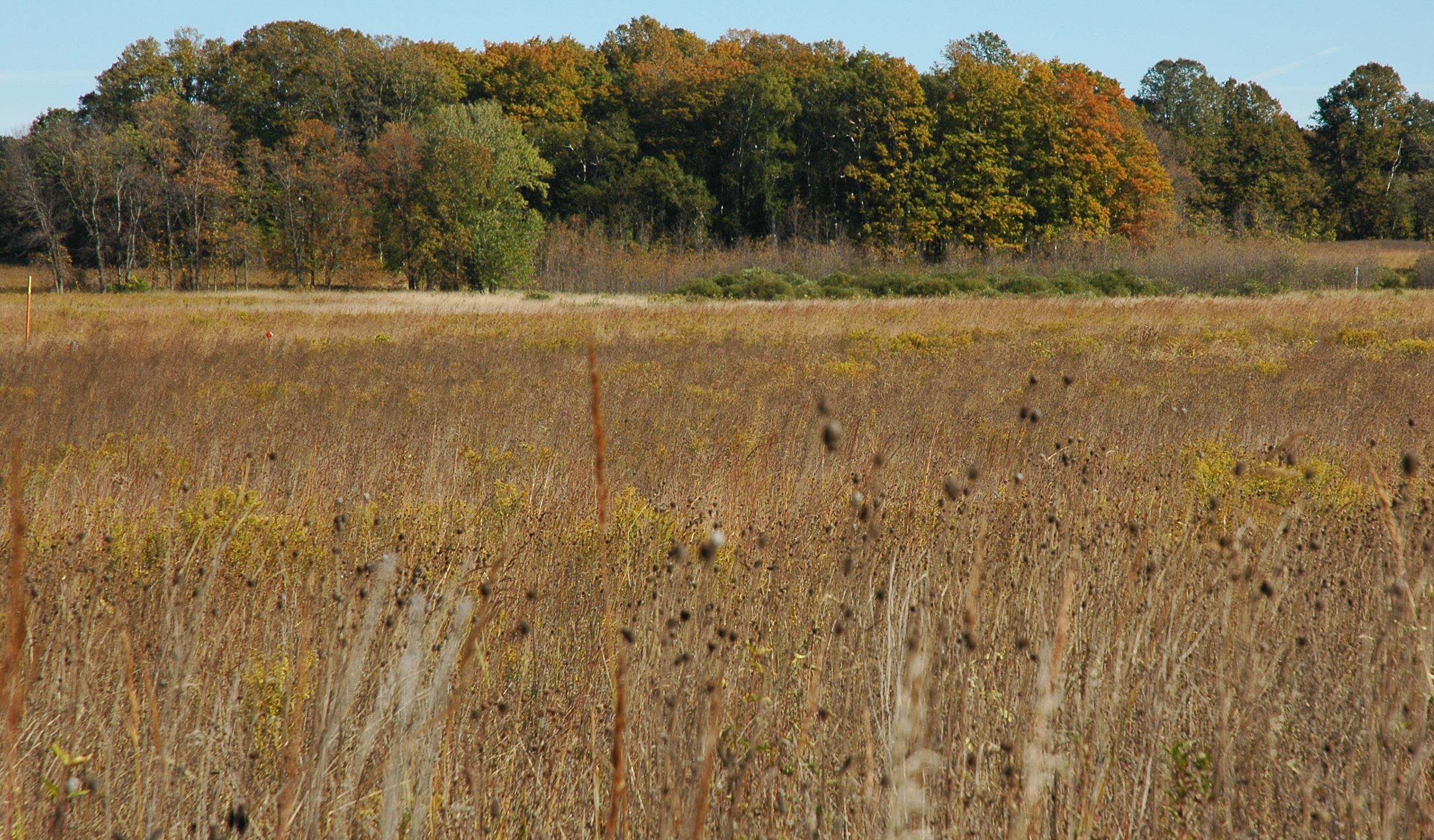
At the heart of every land donation is the owners’ passion for conservation—but there’s always more to the story.
In the case of the adult daughters of Pat and Gordy Nevins, their recent land donation is a way of honoring their parents by safeguarding and sharing a treasured 9 acres along the shore of Green Bay. The parcel has been in the family for three generations. It has brought the sisters feelings of joy, freedom, and respite since childhood when they were full-time residents of Door County.
Nancy, Susan, and Lori Nevins hold close the memories of running with a group of kids who summered in cottages along Mariner Road (or guests at the Nevins’ resort, the Mariner) in Egg Harbor.
“Great adventures of childhood happened in the woods,” Nancy said. “We were all over the property, wetlands or non-wetlands— it didn’t make a difference.”
“We were a group of kids in nature, unfettered by parental rules, but we felt safe,” Lori said. “We could run through
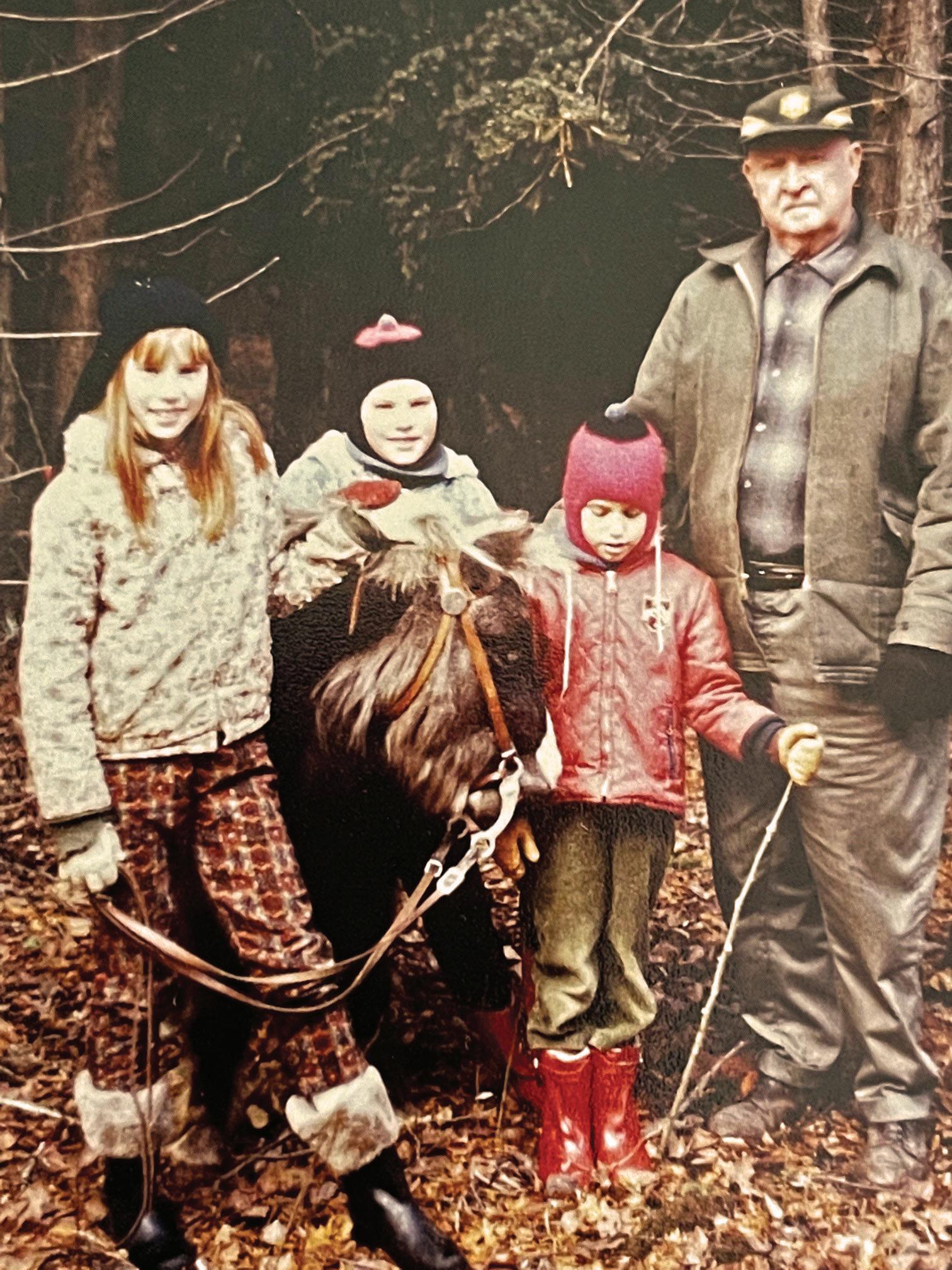
the woods imagining what it was like to be there a long time ago. We built forts and explored nature quietly to see animals. It was the first place I saw a beaver and otters. We each had a feeling of being free, a feeling that one only gets when on your own in nature.”
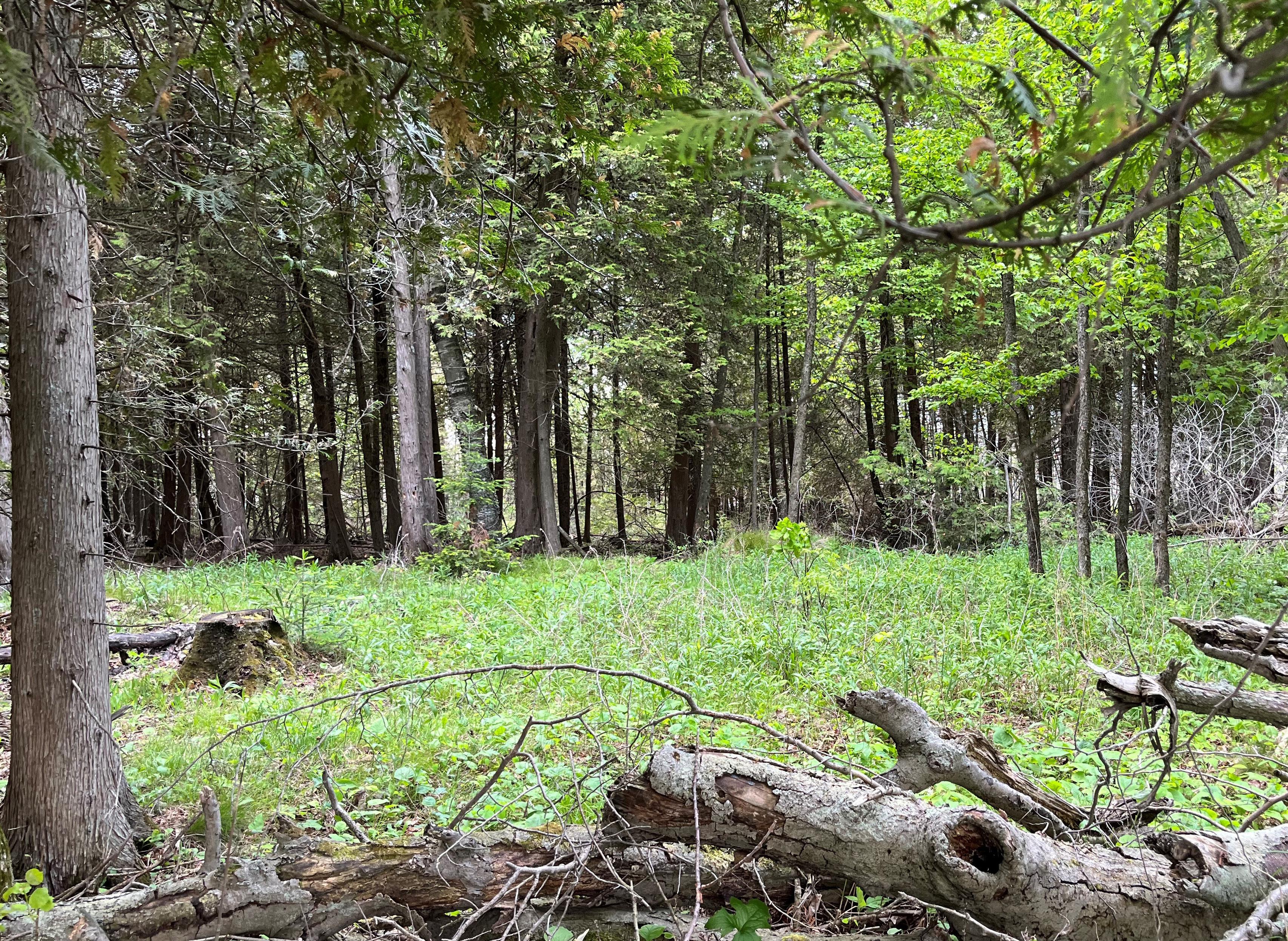
During childhood, nature would help set the schedule. Lori remembers, “When we saw the Green Heron after sunset, we knew it was time to come back in.”
As adults, the sisters would visit the property with their husbands and families. But nature still played a big part. “I would spend time there with my husband, Rob, a bird watcher,” said Lori. “He and Gordy would go for walks and correct each other on the names of birds they spotted.”
The history of the Nevins property involves German immigrant Ferdinand Hotz, who purchased it and a multitude of other properties from local farmers. By 1920, Hotz was the largest land owner in Door County. Hotz believed in preserving the land rather than developing it.
It was in the 1920s that Hotz, a jeweler, photographer, and naturalist from Chicago, sold the parcel to his friend, Harry Nevins, the sisters’ grandfather.
According to Lori, her grandparents were part of a social group from Chicago that enjoyed golfing, boating, fishing, and duck hunting. Like Hotz, Harry’s intent was to never fully develop the property, but to build a cottage and keep much of the remaining acreage untouched.
His son, Gordy, was a building contractor. Although he did develop parts of the family land, he reserved natural spaces to keep overdevelopment at bay. A sportsman, who was an avid member of Ducks Unlimited, he actively tended to the wildlife on his property in hopes of protecting, and eventually attracting, those that no longer made it their home. Among the missing species were Bald Eagles and Wood Ducks.
Gordy stopped the trapping of mink on his land, built Wood Duck nesting boxes, and brought feed to wildlife during the winter. Lori recalls an incident demonstrating her dad’s commitment, even as he said, “It would hurt.” “During the 1980s, Dad purchased automatic feeders,” Lori said. “Set on a timer, I would watch the feed scatter as it blasted by me. Dad would sometimes get hit and loudly complain.”
Other lessons in nature were by far less painful. Seeing loons walking “strangely” on the rocks near their nests, Lori sought out her dad to see if they needed help. “Dad made a drawing showing me how aerodynamic the loons are, with their huge feet set at the back of their bodies, and explained how they fly with their wings underwater. Later, on a canoe trip in clear waters, I understood what he meant.”
Pat Nevins shared her husband’s devotion to preventing overdevelopment. A member of the Egg Harbor Planning Commission for several years, she became even more focused on the cause after learning of the research being done for the National Geographic article “Wisconsin’s Door Peninsula: A Kingdom So Delicious.” Published in 1969, the 30-page story illustrated through both words and photographs how Door County was a place of great natural beauty.
Before the existence of the Land Trust, Gordy and Pat saw the importance of safeguarding land in Door County through donation. It was in the 1970s that the couple gifted land to The Nature Conservancy near the Mink River.

Hotz’s eye for finding rare gems as a jeweler apparently extended to that of land. The Nevins’ property holds a rich combination of features. Its undeveloped shoreline rises to forested wetlands followed by a wet (mesic) forest. Between the shoreline and wetlands is a rock ridge that holds and filters water. “There are very few wetlands on the Green Bay shore with migrating birds and amphibians,” said Terrie Cooper, Senior Land Protection Manager. “These little pockets of land are real treasures ecologically.”
According to Julie Schartner, Land Protection Director, the property is the Land Trust’s first protected land along that stretch of Horseshoe Bay Road. She further emphasized the significance of the Nevins’ donation. “We are so grateful to the Nevins family for conserving this undeveloped stretch of shoreline. Not only is it a wonderful legacy for their family and a generous gift to our community, but it also provides important habitat for birds and wildlife,” she said.
It was a foregone conclusion to Susan, Nancy, and Lori that the land would someday act as a memorial to their conservationist parents. “It was something I had wanted to do since our mother died over 10 years ago,” said Nancy. “The goal was to make a donation to the Land Trust because it is important to preserve as much as we can, especially the wetlands.”
“It was always understood some of the land would go to the Land Trust,” Lori said. “When taking care of Mom in her later years, she and I would casually discuss what she would like to do about the land. It was important to her that the land stay undeveloped.”
With Susan and Nancy living across the country, and Lori in Canada, the sisters agreed that working with the Land Trust to protect the land for perpetuity was a smooth process. “If anyone is thinking of a land donation, they shouldn’t hesitate,” Nancy said. “We need to keep green spaces and protect what makes Door County special —and that’s the land.”
Gathered at the corner of a circa 1872 barn in the dark, Marilyn Hansotia, Jack Finger, and Ralph Blankenberg listen for the sound of muffled scratching and squeaks. These faint auditory cues signal that little brown bats (Myotis lucifugus) are about to emerge from their maternity roost to take to the night sky. There might only be three bats or there could be hundreds of them softly winging past the three Door County Land Trust volunteers at Three Springs Nature Preserve in Sister Bay. The numbers the volunteers register on their hand counters for the Wisconsin Department of Natural Resources (WI-DNR) have everything to do with deadly white-nose syndrome.
White-nose syndrome is caused by a fungus, Pseudogymnoascus destructans, that infects the skin of the muzzle, ears, and wings of hibernating bats. The survival rate is only 10% for the four species of Wisconsin bats known to contract the disease during their torpor (deep sleep) over the winter months. The Door County little brown bats’ customary winter environment in Wisconsin or upper Michigan caves—with damp conditions and steady temperatures around 40oF—provides just the right conditions for fungus.
Marilyn has been with the WI-DNR bat count in Door County since 2011. (There are currently 10 bat counting sites on the peninsula.) She has witnessed a marked decrease in the count since 2015. That year the disease had made its way to the Midwest after traveling from the east coast of the United States from Europe in 2006.
“In July of 2014, we had the highest bat count in the state [at Three Springs] at 715,” she said. “The following July that number was only 245, with the lowest count coming to 50 in 2017.”
The DNR holds bat counts twice a summer. The first is upon the arrival of female bats to their maternity roosts in early June. The count is then repeated in mid July after
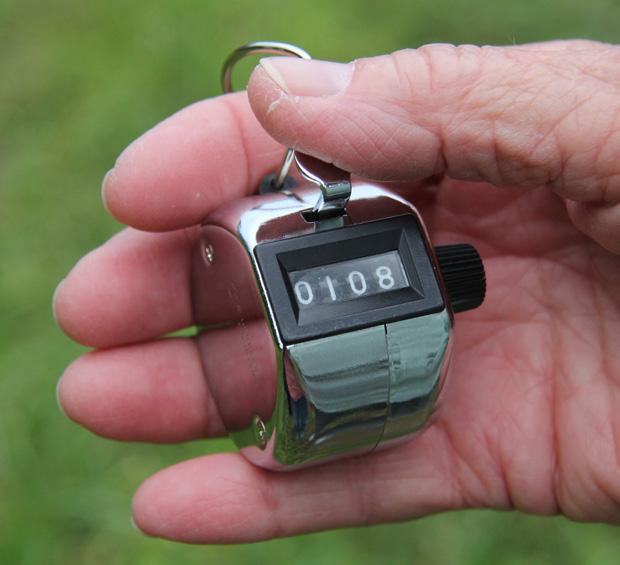
a single pup is expected to be born from each female. This number provides both an indication of pup survival and a comparison to the number of returning bats the following year.
Marilyn admits that counting flying bats after dark on hand clickers doesn’t necessarily reflect hard numbers. “It’s not an exact science, but it indicates where we are with bat survival overall and white-nose syndrome specifically,” she said.
To date, there is no known cure for white-nose syndrome, but recent rising numbers collected throughout Wisconsin indicate that females that return to their roost may be building immunities to the disease.
Marilyn sites a statistic from the US Geological Survey in one way that bats bring irreplaceable benefits to mankind. “They offer 3.7 billion dollars a year in insect control to farms in the U.S.,” she said. “They also take care of a lot of disease-carrying mosquitos.”
According to the U.S. Geological Survey’s usgs.gov, that value doesn’t take into account bats in forest ecosystems that offer pest control for the lumber industry, or the importance bats have as plant and crop pollinators.
The Land Trust thanks Marilyn and other volunteers for collecting data that is vital to management of the Three Springs property. With this kind of information— and generous membership contributions—the Land Trust will renovate the barn this fall and winter to stabilize the maternity roost.
Without a cure for white-nose syndrome, Marilyn is grateful to the Land Trust for their commitment to tend to the structure of the barn and do what they can to help the threatened little brown bat species survive. “They have my great appreciation for pursuing the replacement of the roof of the barn,” she said. “Without it, we’d lose not only a great building but home to hundreds of bats.”

As daylight length shortens and late summer mornings become increasingly crisper, the Door County outdoorsperson starts to think of the upcoming fall hunting season. The anticipation of this year’s hunting season is likely similar to years past. Maybe this will be the year the elusive buck finally shows himself during daylight hours. Or maybe this is the year that one will worry less about antlers and more about a full freezer. Regardless, to many the excitement of spending time and furthering longstanding traditions with friends and family at deer camp is more important than the actual hunt. Undoubtedly, the anticipation of the upcoming hunting season is strong.
Akey benefit of hunting is obvious: Each harvested deer provides roughly 30 lbs of primo wild game meat. But often overlooked by the non-hunting community is the role hunters play in conserving the ecological diversity of our beautiful Door County landscape. A walk through a
Door County Land Trust nature preserve with an absent understory means one thing—too many deer. Deer overpopulation results in higher rates of overbrowsing on understory vegetation, impacting habitat for many other species that call our forests home.

ake a close look at a white cedar forest that borders an agriculture field in Door County. It is not a coincidence that the forest overstory begins at roughly six feet above ground level. Population control is the key to restoring our forest understories.
In an effort to once again reduce the deer population on Door County’s peninsula, the WI-DNR is giving deer hunting license holders an additional three antlerless permits with every license. For those holding both archery and gun deer licenses, that is a total of eight tags.
In addition to our Door County Land Trust nature preserves, The Nature Conservancy, The Ridges Sanctuary, and WI-DNR lands may provide hunting opportunities for conservationists. Please visit their websites for details.
House Wrens are known to be aggressive and territorial during breeding season. I was surprised one day when I found that Bluebirds had taken over a House Wren box. There was a Wren egg that was tossed outside the nest cup, and then the following week there were four Bluebird eggs.
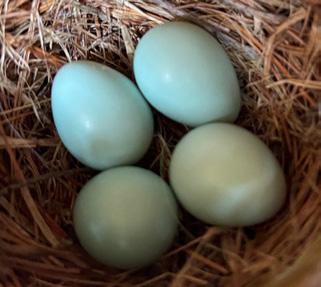
•If you see a compact Kubota mowing, look for Thomas Stasiak, Land Stewardship Coordinator, in our new tractor! This vehicle allows us to install and maintain prairie habitat and trails in open areas. In the winter, we’ll use it to provide better access to more of our preserves with snow removal.
•Thomas has led the charge replacing the overlook at Three Springs and should be finishing up with the railing soon. We will be installing a foot bridge at Legacy Nature Preserve at Clay Banks later this summer or early fall.
•We’ve gone on the offensive with garlic mustard. We treated over 15 acres at seven nature preserves and natural areas. Ecological Restoration Coordinator, Tina Lee, put the removal of European marsh thistle on her battle plan, tackling several acres at three nature preserves. New targets include crown vetch, purple loosestrife, and cypress spurge, as well as follow-up monitoring of all of our phragmites treatments from last year.
•Look for new Bluebird boxes at Oak Road Nature Preserve and Heins Creek Nature Preserve. Both staff and volunteers have been actively monitoring. We hope to expand this program to other preserves next year.
•Kestrels are enjoying their own version of a twitter feed now that their chicks have hatched at Oak Road Nature Preserve!
•Our partnership with Chicago Botanic Garden to research Pitcher’s thistle in the coastal dune habitat at Sturgeon Bay Ship Canal Nature Preserve continues. In 2021 several neighbors agreed to participate in the pollinator network research, which is supported by a US Fish and Wildlife Service Midwest Coastal Grant. We are now able to compare the pollinator network at Ship Canal, where restoration has taken place, vs. privately owned shoreline without any invasive species removal.
•We brought in a specialist...This winter, the Land Trust hired a contractor to control woody invasives over portions of Legacy Nature Preserve and Kellner Fen Natural Area. There is more work to do, but the treatments look very successful.
•Many thanks to members, volunteers, and preserve stewards! Without your time and generous donations, these projects would not be possible.
Enjoying this issue of Landings News Splash? You can thank the newest member of our staff, Kay McKinley! Kay joined the Door County Land Trust as our Communications Coordinator in May 2022, just in time to help with our office relocation. Kay’s background as a journalist, professional photographer, publicity consultant, and graphic designer gives her the perfect skill set as she manages the Land Trust’s publications, social media, website, publicity, events, and more. Kay previously worked at Peninsula School of Art where she directed the gallery and exhibitions, including the Door County Plein Air Festival. Kay has been instrumental in selecting photographs for our new office.

If you’re a photographer interested in submitting photos for the and Trust’s social media or newsletters, send them to Kay at photos@ doorcountylandtrust.org. Consider joining the photography volunteer group at www.doorcountylandtrust.org/signup.
Autumn is a second spring when every leaf is a flower. -Albert Camus

Want to list your business here? Please contact Director of Charitable Giving Cinnamon Rossman at (920) 746-1359 or giving@doorcountylandtrust.org.
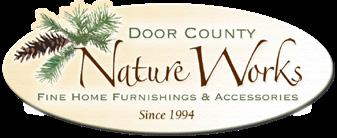



Ashbrooke Hotel
Bridge Up Brewing Company
Camp Store At Nicolet Beach
Door County Courier

Door County Eye Associates
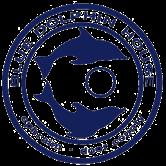

Door County Nature Works
Door Landscape & Nursery Ecology
First Light Arts, Jim Perry
The Garden Lady, Beth Coleman
Gills Rock Pottery
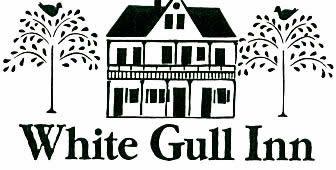
Glidden Lodge Beach Resort
Grasse’s Grill
Impressions Printing and Graphics
Jack and Jill’s Landscaping
Jerry’s Flowers
Out of the Woods Woodworking, Curt Wessel RentShadowLawn.com
Ross Estate Planning
Smile Designs of Door County
Sunnypoint Landscape
Terra Cottages
Dr Timothy Tishler, DDS
True North Real Estate
Wagon Trail Campground
Washington Island Ferry Line
Zero Sum Muffin Shop
Even though our office has moved, our mailing address remains the same!
Mail: PO Box 65, Sturgeon Bay, WI 54235
Visit us at (no mail): 217 N. Fourth Avenue, Sturgeon Bay
